Hiking can be done for exercise, adventure, exploration, and more. You can find trails near even the most urban areas, so even you city-dwellers can get in on it!
It’s a safe endeavor most of the time, but that doesn’t mean you shouldn’t pack a med kit, a means to call for help, and a gun (if you can).
Before you set yourself loose in the wilds of North America, you’ll need a good hiking handgun.
And just what is a hiking handgun? I’m so glad you asked.
I’ll run you through what makes a gun a good option for a hiking buddy. We’ll also look at some carry options as well. I’ll even provide a few of my favorite holsters for each!
THE QUICK LIST
-
Best 10mm Pistol
-
Best Revolver
-
Best 9mm Pistol
-
Best High-Power Revolver
-
Best Compact Revolver
-
Best Rimfire
Table of Contents
Loading…
How We Test the Best Hiking Handguns
Input for this article came from the entire Pew Pew Tactical staff. Our team experience includes law enforcement, military, competition, instructing, and recreational shooting. Oh, and lots of hiking, too!
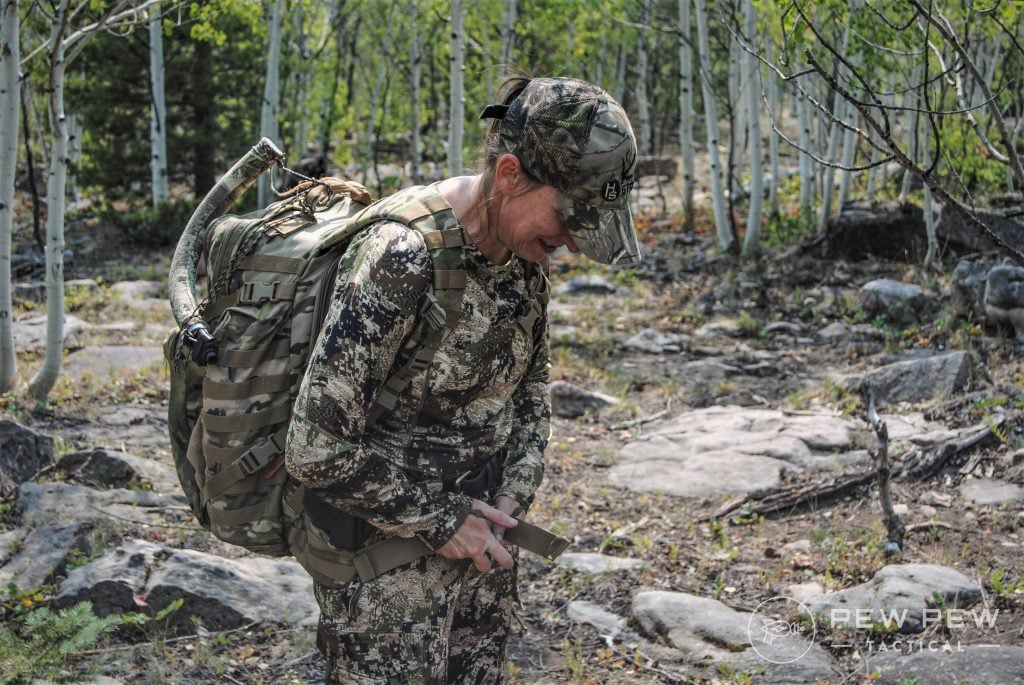
Someone on our team has shot every pistol on this list. We’ve worn every holster you’ll see here, too, and our recommendations are built on real-world experience.
Best Hiking Handguns
1. Glock 20 Gen 5 MOS – Best 10mm Pistol
Prices accurate at time of writing
Prices accurate at time of writing
-
25% off all OAKLEY products - OAKLEY25
Copied! Visit Merchant
Pros
- Reliable
- Accurate
- Customizable
Cons
- Mediocre trigger
- Blockier ergonomics
Specs
- Caliber: 10mm
- Action: Semi-auto, striker-fired
- Capacity: 15+1
- Barrel Length: 4.6″
- Overall Length: 8.1″
- Weight: 29.8 oz
- Optic-Ready: Yes
As far as I am concerned, Glock made the Glock 20 just for me. I love the 10mm, and I love quality firearms with decent capacity.
The G20 gives me 15 rounds of hard-hitting 10mm on tap for any environment or situation.

As far as hiking handguns go, the Glock 20 offers tons of versatility. It’s powerful enough to stop bears with the right load but also appropriate for coyotes, mountain lions, and even snakes and two-legged vermin.
Because it’s a Glock, it’s reliable, accurate, easy to handle, and even affordable. Glocks are easy to customize, and swapping out the crappy plastic sights will be a must.
Other than that, the gun is plug-and-play.
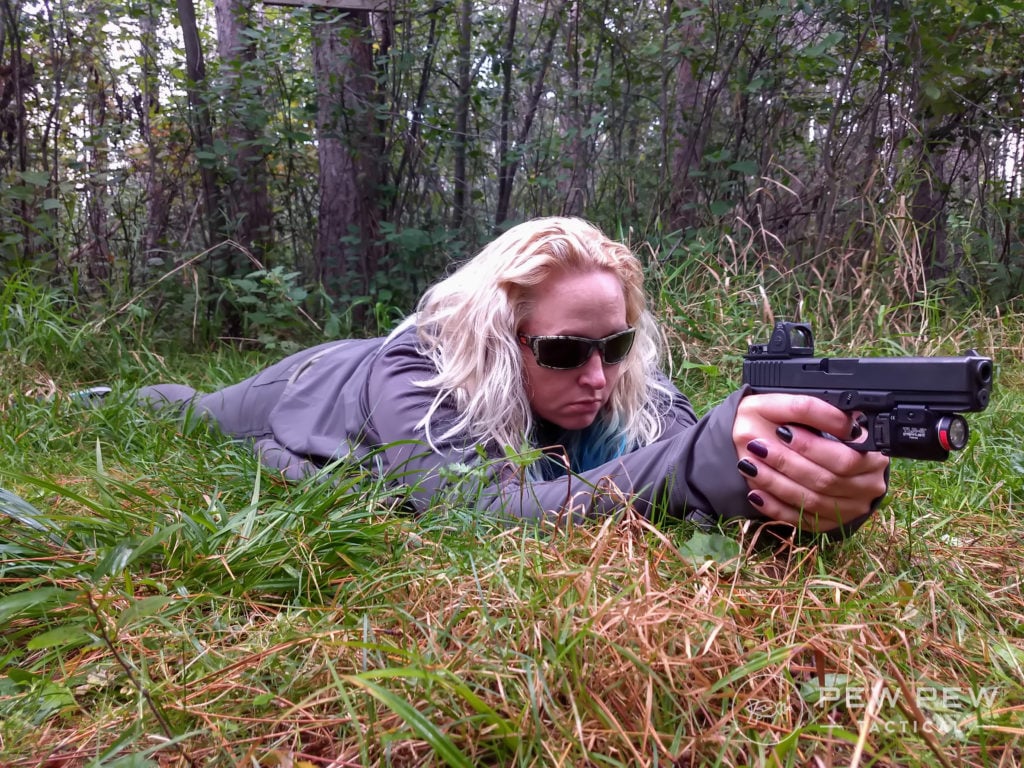
The latest version of this pistol, the Glock 20 Gen5 MOS, gets a few internal upgrades and a plate-based mounting system so you can add a red dot of your choice!
Need more reasons to love the Glock 20? We’ve also given this pistol its own review!
Holster It: Safariland 7378
Prices accurate at time of writing
Prices accurate at time of writing
-
25% off all OAKLEY products - OAKLEY25
Copied! Visit Merchant
I might dislike Safariland’s naming conventions, but I do love their holsters.
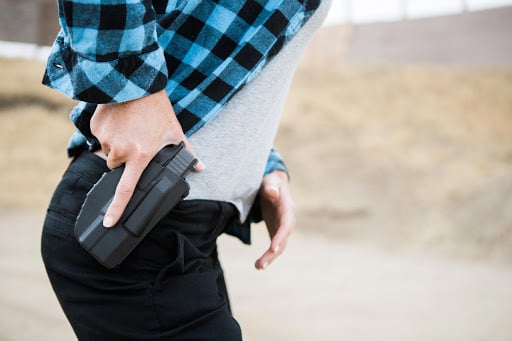
You won’t drop your G20 by accident. Safariland’s ALS system pins the gun in place and will not release the gun until the thumb release is pressed.
It’s made from polymer and comes with Safariland’s awesome reputation.
2. Ruger Blackhawk – Best Revolver
Prices accurate at time of writing
Prices accurate at time of writing
-
25% off all OAKLEY products - OAKLEY25
Copied! Visit Merchant
Pros
- Versatile
- Simple
- Accurate
Cons
- Limited aftermarket
- Slower reload time
- Only 6 rounds
Specs
- Caliber: 9mm, .357 Mag (convertible)
- Action: Single-action revolver
- Capacity: 6
- Barrel Length: 6.5″
- Overall Length: 12.4″
- Weight: 45 oz
- Optic-Ready: No
Single-action Western-style revolvers kick all the butt.
These guns rule, and they offer an easy carrying option for hiking. The Ruger Blackhawk comes in various configurations and calibers.
One of the most exciting options lets you switch from .357 Mag to 9mm just by swapping out the cylinder…no tools required!

This lets you train with cheap, soft-recoiling 9mm most of the time and switch to a more powerful cartridge if you need the extra oomph.
You can deal with big bears if necessary, as well as hogs, coyotes, and anything else that crosses your path.
The Ruger Blackhawk’s single-action trigger delivers a short and crisp trigger pull that allows for outstanding accuracy.

The trigger is backed by big robust sights and a comfortable cowboy-style grip.
Plus, it’s an affordable option in the big-bore revolver world.
Holster It: Galco Single Action Outdoorsman
Prices accurate at time of writing
Prices accurate at time of writing
-
25% off all OAKLEY products - OAKLEY25
Copied! Visit Merchant
A classic cowboy gun needs a classic holster, right?
Well, the Galco Single Action Outdoorsman gives you a leather OWB holster in a classic configuration. A thumb snap provides retention, and the holster protects the Blackhawk perfectly.
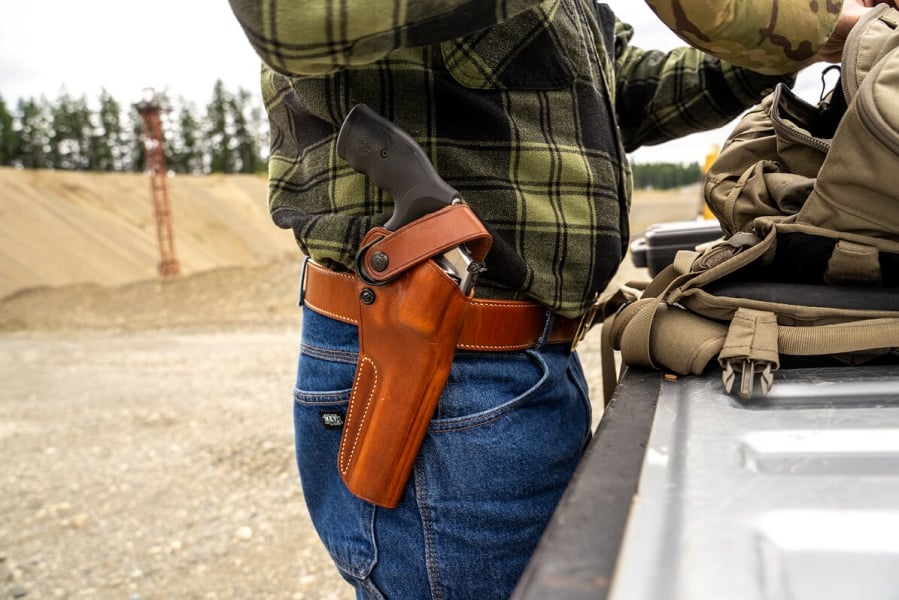
Be picky when it comes to leather holsters. Bad leather holsters are unsafe and leave a lot to be desired.
Galco makes outstanding leather holsters, and the Single Action Outdoorsman shows they know what they’re doing.
3. CZ P10C – Best 9mm Pistol
Prices accurate at time of writing
Prices accurate at time of writing
-
25% off all OAKLEY products - OAKLEY25
Copied! Visit Merchant
Pros
- Optics-ready versions available
- Good trigger for the price point
- Great ergonomics
- Proven track record
Cons
- Grip texture is very sharp and may be too aggressive for some.
- Front serrations are too shallow/short for some
- Slide catch tough to reach for smaller-handed shooters
Specs
- Caliber: 9mm
- Action: Semi-automatic, striker-fired
- Capacity: 15+1
- Barrel Length: 4″
- Overall Length: 7.3″
- Weight: 26 oz
- Optic-Ready: Yes (model-specific)
Yep, your average 9mm still makes for an awesome hiking gun. That’s especially true if it’s the gun you train with the most.
CZ created the P10C a few years back, and they created what I consider to be the best stock striker-fired, polymer-frame pistol on the market.
This is the gun I often pack; for my area, it’s perfectly suitable for the threats I encounter.
A 9mm can deal with the average-sized hog, coyote, wild dog, and whatever two-legged vermin I may encounter.
Lord forbid I walk upon a cottonmouth snake, but if I do, a 9mm isn’t overkill either.
The P-10C is controllable, lightweight, easy to carry, and reliable.

I own a standard P10C, an early model, and if I had the option at the time…I’d have gone with an optic-ready version. Red dots make shooters faster, more accurate, and extend their effective range.
What’s not to love? Add in a light, and I have a gun I can use regardless of the external conditions.
Don’t forget to check out our full review of the CZ P10C!
Holster It: PHLster Floodlight OWB
Prices accurate at time of writing
Prices accurate at time of writing
-
25% off all OAKLEY products - OAKLEY25
Copied! Visit Merchant
A gun with an optic and a light requires a specific holster, and the PHLster Floodlight is that holster. It accommodates a TLR 1 or Surefire X300U, suppressor height sights, and an optic.
This rig only offers passive retention, but it’s easily adjustable to ensure the holster grips the gun.
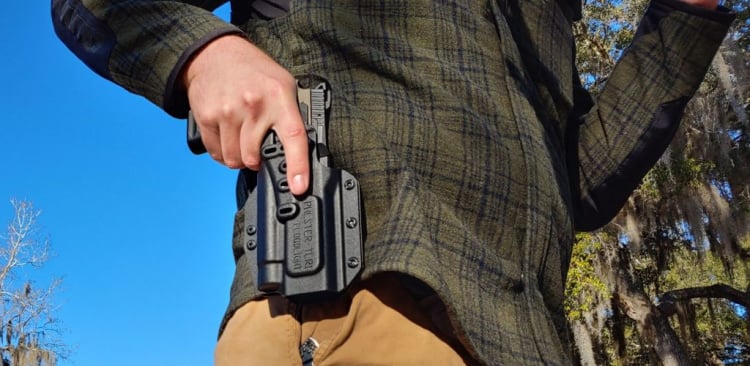
PHLster makes an outstanding holster, and the Floodlight OWB is compatible with various firearms. It’s universal in the best way possible.
Not to mention, it’s modular and allows for a wide variety of different mounting options from G-Code, Tek Lok, and Safariland.
Have you tried the PHLster Floodlight? If so, rate it below!
4. Ruger Super Redhawk Alaskan – Best High-Power Revolver
Prices accurate at time of writing
Prices accurate at time of writing
-
25% off all OAKLEY products - OAKLEY25
Copied! Visit Merchant
Pros
- Extremely powerful
- Maneuverable
- Good trigger
Cons
- Expensive
- Punishing recoil
Specs
- Caliber: .480 Ruger
- Action: DA/SA revolver
- Capacity: 6
- Barrel Length: 2.5″
- Overall Length: 7.6″
- Weight: 44 oz
- Optic-Ready: No
If you like ’em thick but short, then the Ruger Super Redhawk Alaskan is for you.
Ruger trimmed the barrel to 2.5 inches, and the madmen chambered the gun for .480 Ruger. That’s a very little barrel for a very powerful cartridge.

It’s much lighter and easier to carry than a standard Super Redhawk, but packs nearly as much power as the fearsome .454 Casull.
This big-but-short gun packs six rounds of this heavy-duty cartridge and will make short work of animals up to and including aggressive brown bears.
Big sights and the ability to cock the hammer make it easy to be accurate with the gun.
While small, it packs a huge grip that makes everything more comfortable.

It still recoils like a wild bull bucks, but it’s not painful.
The Super Redhawk Alaskan isn’t for everyone, and it does take some practice to master. However, it packs lots of power in a small package.
Check out our full review of the Super Redhawk, too!
Holster It: Gunfighters Inc. Kenai Chest Rig
Prices accurate at time of writing
Prices accurate at time of writing
-
25% off all OAKLEY products - OAKLEY25
Copied! Visit Merchant
Chest rigs are often made from leather, but the Kenai chest rig goes modern with a dose of nylon and Kydex to produce a more secure and durable chest holster.
Gunfighters Inc. molds holsters for a specific handgun; this ensures safety and excellent retention.
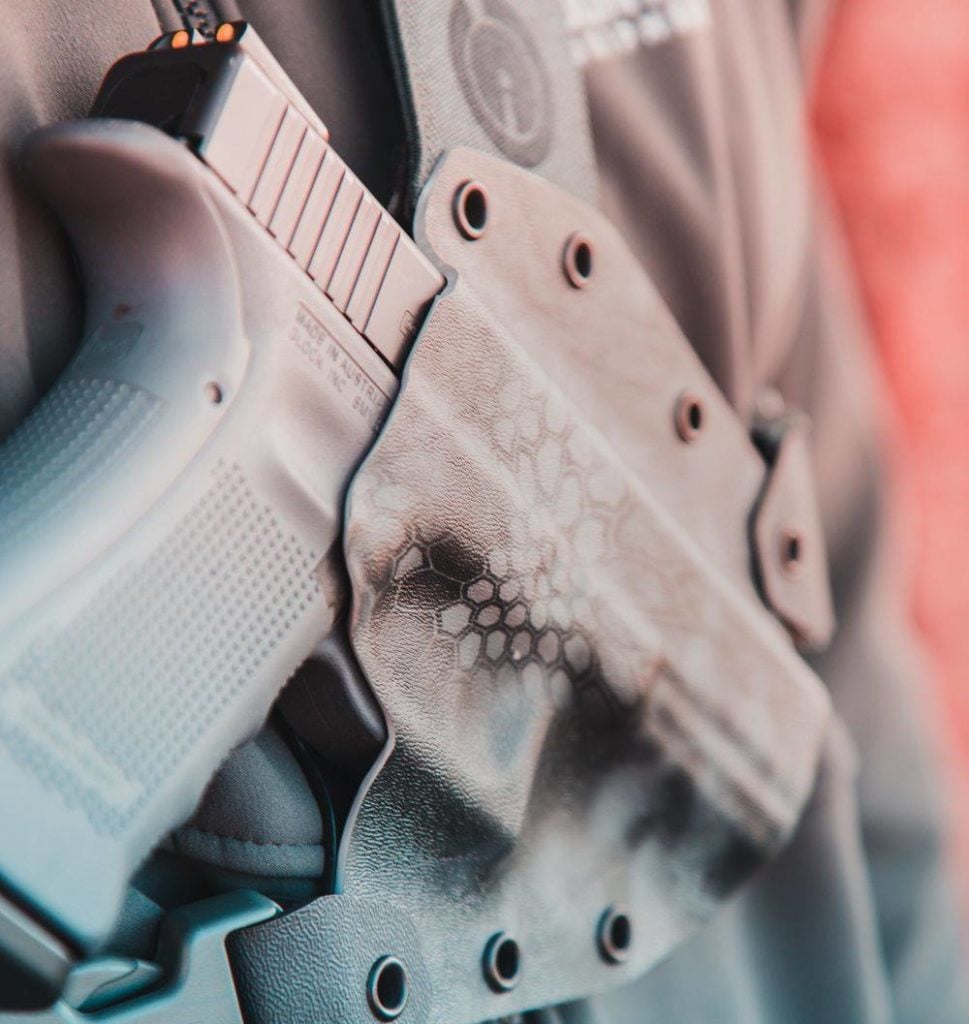
It also provides a comfortable means to carry the big Super Redhawk. It’s also easy to access and gives you total mobility for your arms and hips.
As far as holsters go, the Kenai is super modern and provides you with one of the best chest rigs on the market.
5. S&W Model 60 – Best Compact Revolver
Prices accurate at time of writing
Prices accurate at time of writing
-
25% off all OAKLEY products - OAKLEY25
Copied! Visit Merchant
Pros
- Relatively compact and light
- Good trigger
- Good value
Cons
- Limited capacity
Specs
- Caliber: .357 Mag
- Action: DA/SA revolver
- Capacity: 5
- Barrel Length: 2.1″
- Overall Length: 6.6″
- Weight: 21.4 oz
- Optic-Ready: No
A lot of revolvers are quite large and heavy.
The S&W Model 60 is not just relatively small but small in general. This 5-shot J-frame revolver packs .357 Magnum power into a small package.
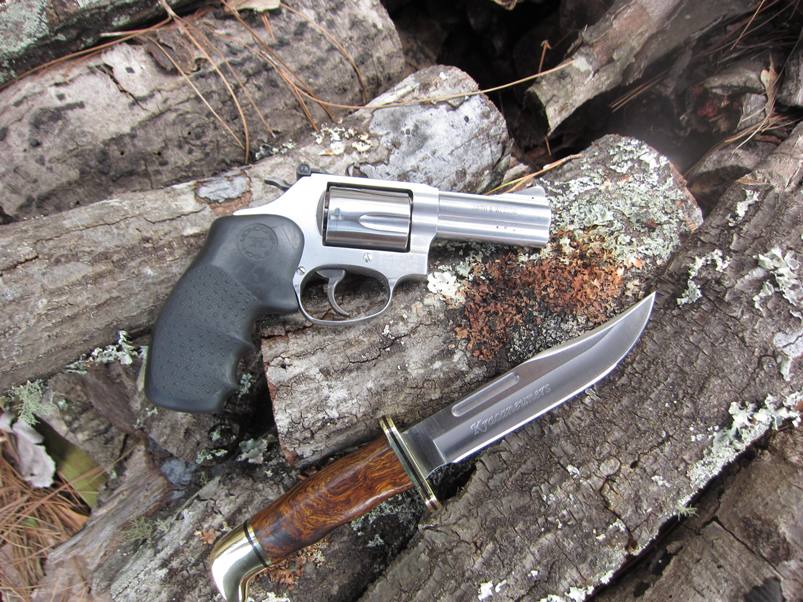
The longer (relative term) barrel makes it easier to shoot than a snub nose, and the small frame makes it easy to conceal.
Potent .357 Magnum can deal with most moderate-sized critters. Small bears, coyotes, and hogs are easily dispatched, as are two-legged assailants.
The Model 60 offers an exposed hammer which means single action is easily engaged for accurate shots. As a small-sized revolver, it’s also super easy to carry and comfortable for concealed carry.
Holster It: Craft Holsters Shoulder Holster System
Prices accurate at time of writing
Prices accurate at time of writing
-
25% off all OAKLEY products - OAKLEY25
Copied! Visit Merchant
A little gun is perfect for shoulder holster carry. It’s small and doesn’t pull down on your shoulder as you work and move.
The Craft Holster Shoulder Holster System is all leather and provides you with both a holster and pouches to carry spare ammunition in speed loaders.
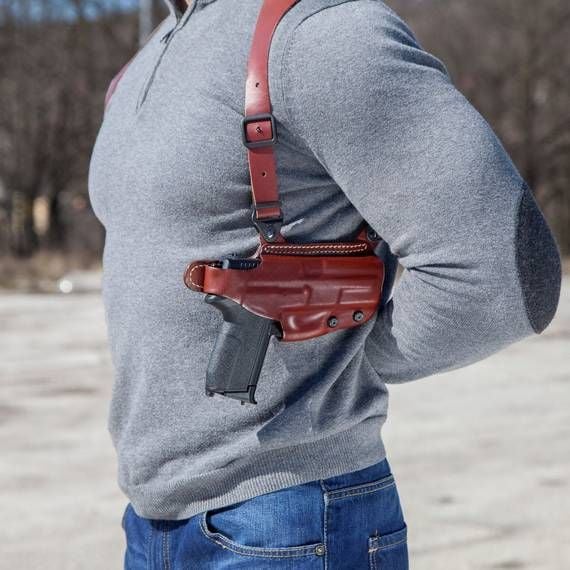
It’s superbly adjustable and comfortable for hikers, both big and small.
Also, it offers a leather thumb snap for maximum retention. This holster is easily concealed and well-suited for keeping your gun away from the woods and water.
6. Heritage Arms Rough Rider – Best Rimfire
Prices accurate at time of writing
Prices accurate at time of writing
-
25% off all OAKLEY products - OAKLEY25
Copied! Visit Merchant
Pros
- Super affordable
- Some shoot .22 LR and .22 WMR
- Nice selection of grips and finishes
Cons
- Low power
Specs
- Caliber: .22LR, .22 WMR (convertible)
- Action: Single-action revolver
- Capacity: 9
- Barrel Length: 4.75″
- Overall Length: 10″
- Weight: 29.8 oz
- Optic-Ready: No
Yep, a cheap .22 LR revolver might be one of the best hiking guns.
For years, I strapped on a Rough Rider whenever I went on an ATV or horse ride, and of course, on hikes.
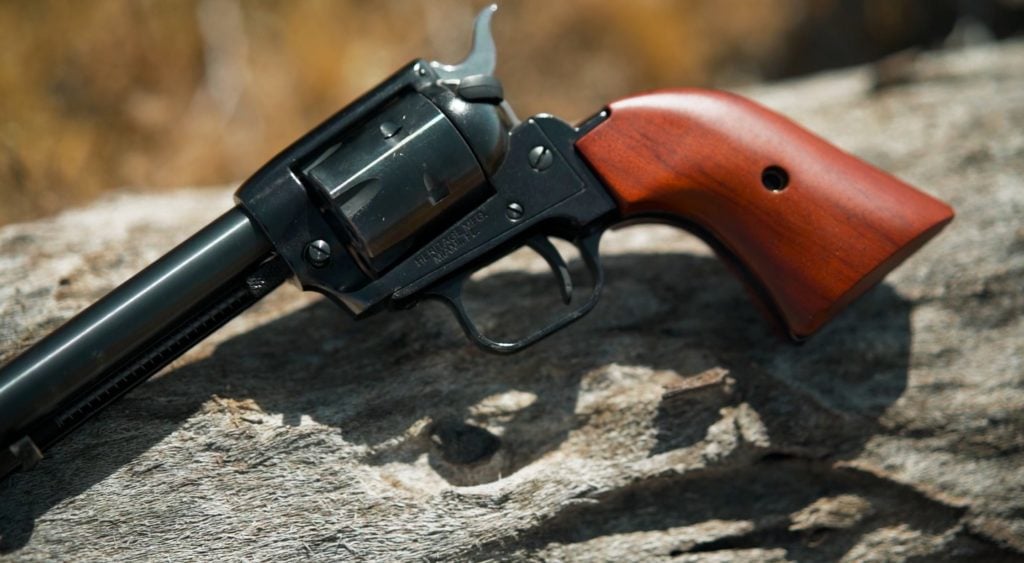
In my area, I face a number of threats, but snakes are the most common.
I try to avoid them, and I have backed down from a rattlesnake more than once. However, I’m not going to be defenseless 45 miles from a hospital.

A .22 makes short work of reptiles and even coyotes.
The Heritage Arms Rough Rider is a single-action rimfire revolver that is superbly affordable and fun to shoot.
Its lightweight design (especially the 4.75-inch variant) is easy to carry. All in all, it’s accurate, reliable, and well-suited for hiking.
We got a little goofy reviewing the Rough Rider 16″. Check it out!
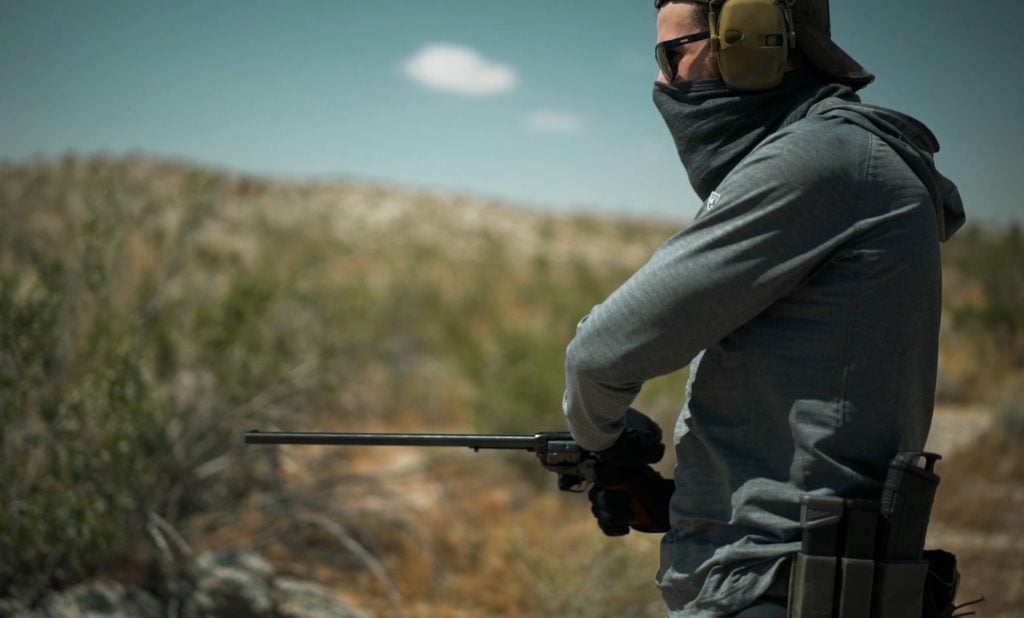
Holster It: Bull Creek Leather Western Holster
-
25% off all OAKLEY products - OAKLEY25
Copied! Visit Merchant
Lots of holsters out there cost almost as much as the Rough Rider. The Bull Creek Leather Holster provides a leather western-style holster at a fraction of the price.
It’s built for the Rough Rider and fits the smaller frame single-action gun well.
A simple thumb snap makes retention a non-issue. The leather is saddle-grade and perfectly acceptable for hiking use.
Plus, at the price point, it’s tough to go cheaper without going into the crappy holster world.
How to Choose the Best Hiking Handguns
Out in the wild, you’ll face numerous threats…snakes, coyotes, mountain lions, bears, and even two-legged attackers that might need ballistic dissuasion.
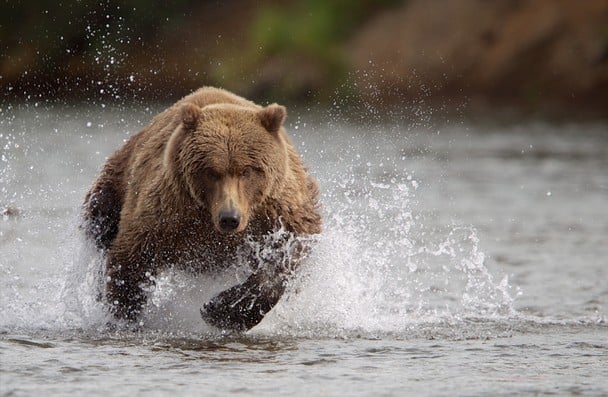
Before you choose a hiking gun, you might want to do a quick threat analysis to evaluate where you’re hiking and what kind of predators you might encounter.
The threats in Alaska look very different than those in, say, Florida or Maine. So there isn’t just one hiking gun to rule them all.
Reduced Weight
When searching for the right handgun for the trail, take weight into consideration.
Once you hit the ground hiking, you’ll learn that weight matters, and the more weight you have, the more weighed down you’ll feel. Remember that old adage, “Ounces are pounds, and pounds are pain?”
Yeah, it applies here, too.

Hiking handguns are not hunting handguns, so you can easily trim weight. The more you can reduce without losing power, the better.
Ease of Carry
You’ll want to reduce size here and there to make your hiking handgun gun easier to carry and manipulate. One of the best ways is to trim barrel length.
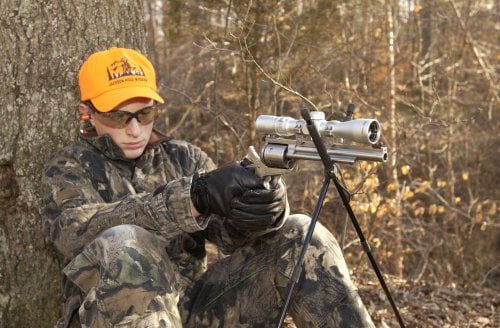
Hiking handguns are not hunting handguns, so you can afford to trim down on the barrel and grips a bit. You’ll want a gun that’s easy to carry but also easy to shoot, even single-handed if needed.
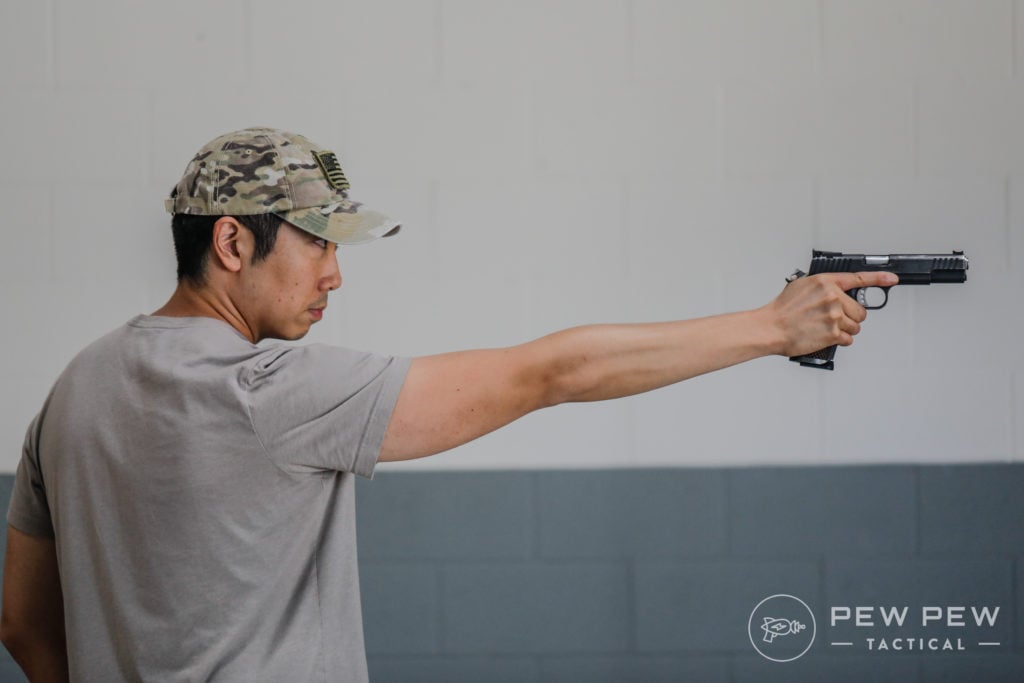
Power
Hiking handguns are the perfect example of the term power is relative. Conduct a threat analysis and see how much power you need.
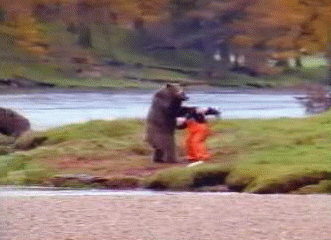
I live in an area that doesn’t have large bear populations, mountain lions, or other large scary creatures. Powerful to me is a 10mm. But generally, I carry a 9mm on most hikes or, occasionally, a .22 LR handgun. That’s all I need to be safe from the threats in my area.

Base the power level you need on the threats existing in your area.
Hiking Gun Holster Considerations
If you have a hiking handgun, you’ll need a good holster for it.
A quality holster protects the gun, ensures safety, and makes it easy to access your gun when needed.
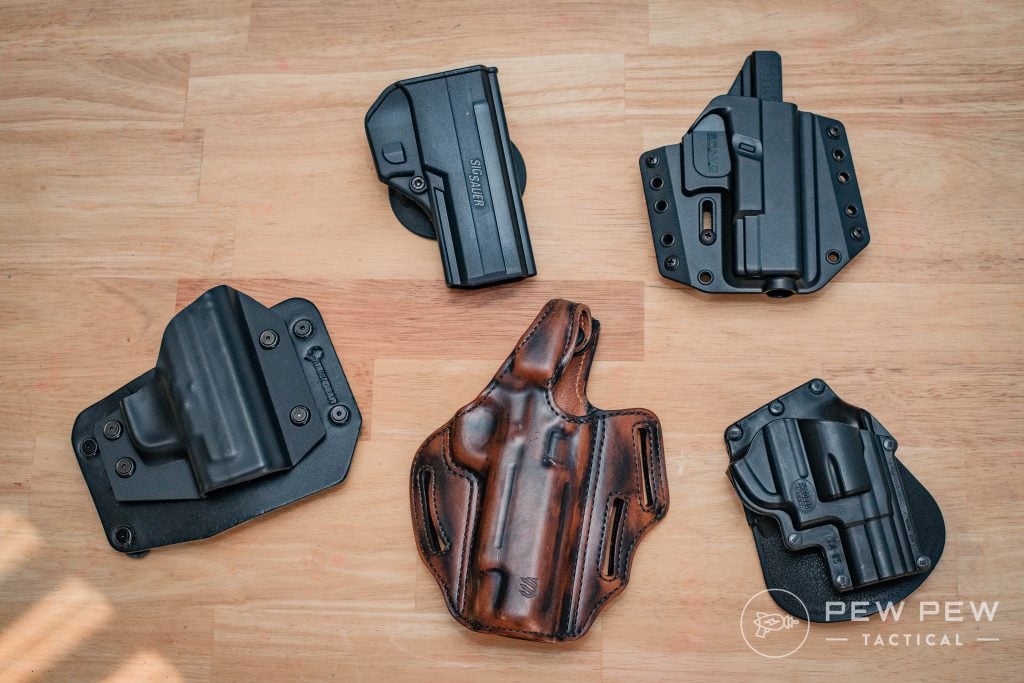
Beyond that, hiking often offers rough or unpredictable terrain. Choosing a holster with proper retention is critical.
For hiking carry, there are three different styles of holsters you should consider for hiking handguns.
Shoulder Holsters
Shoulder carry places the weapon under your arm and above your waist.
With it off your waist, you’re less likely to submerge it when you cross streams or get snagged on thick vegetation.
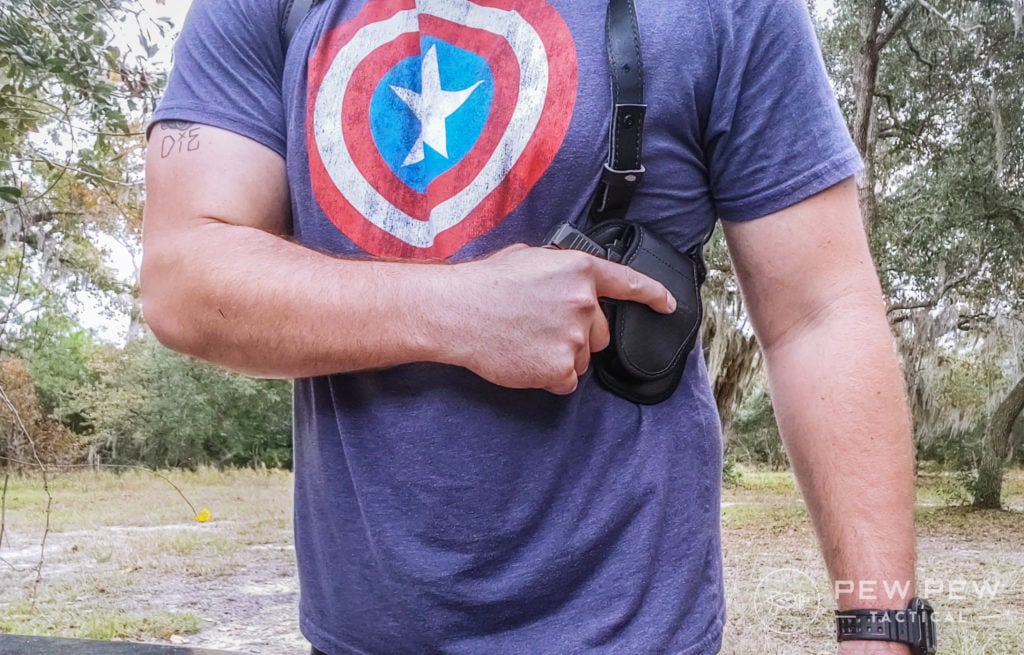
With a shoulder rig, you still have the option of concealment. Some states prohibit open carry at any time, so this offers some flexibility.
Chest Holsters
A classic place to carry a hiking gun is on the chest.
Like a shoulder holster, the gun is off your waist and well-protected. When you pack a big revolver, chest carry is convenient and comfortable.
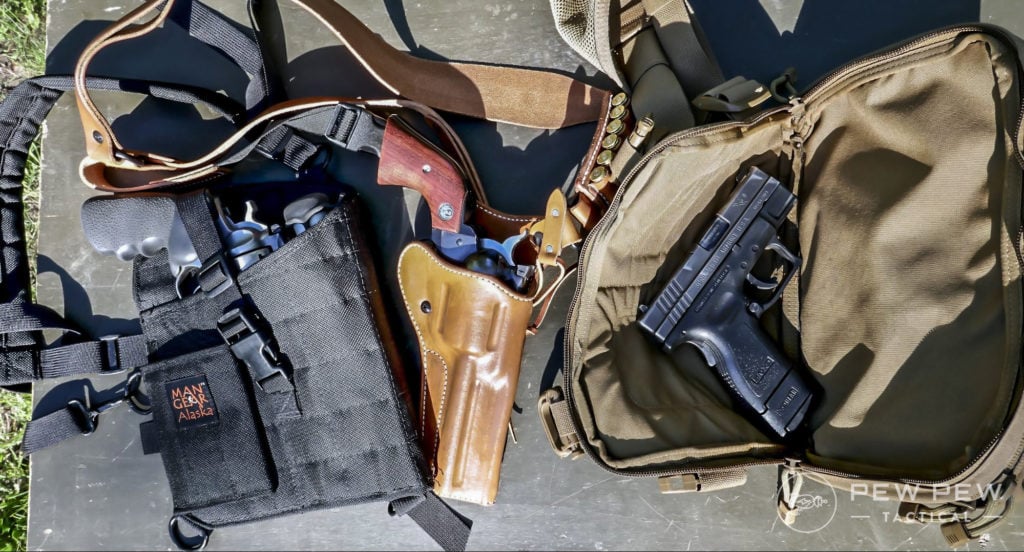
Chest rigs offer quick access to your hiking handgun and maximum mobility. The downside is these are essentially open-carry rigs.
On The Waist Holsters
Carrying your hiking handgun on your waist might not elevate the gun, but it’s still super comfortable, easily accessible, and capable of being concealed.
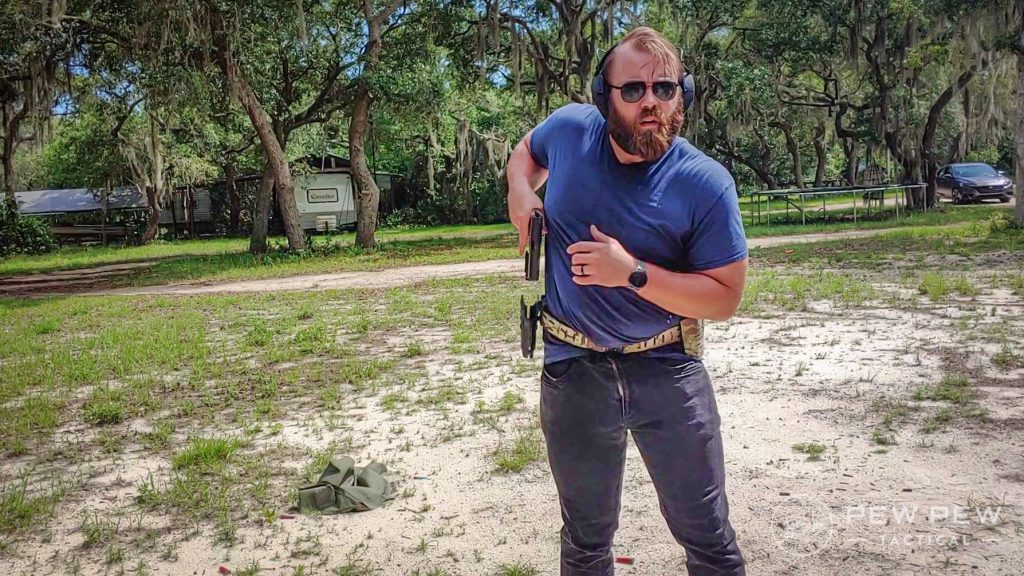
I carry my hiking handgun outside the waistband for comfort and mobility reasons. Nobody wants to get poked and prodded on a hike.
When you carry on the waist, you have to be mindful of brush that could snag your holster, but it’s still a safe and proper way to pack a hiking handgun.
Why Trust Us
The Pew Pew Tactical team has countless hours of hunting, backpacking, camping, and backcountry time under our belts. No matter what kind of wilderness adventure you can imagine, somebody on this crew has probably done it, and we know what handguns we trust in that situation.
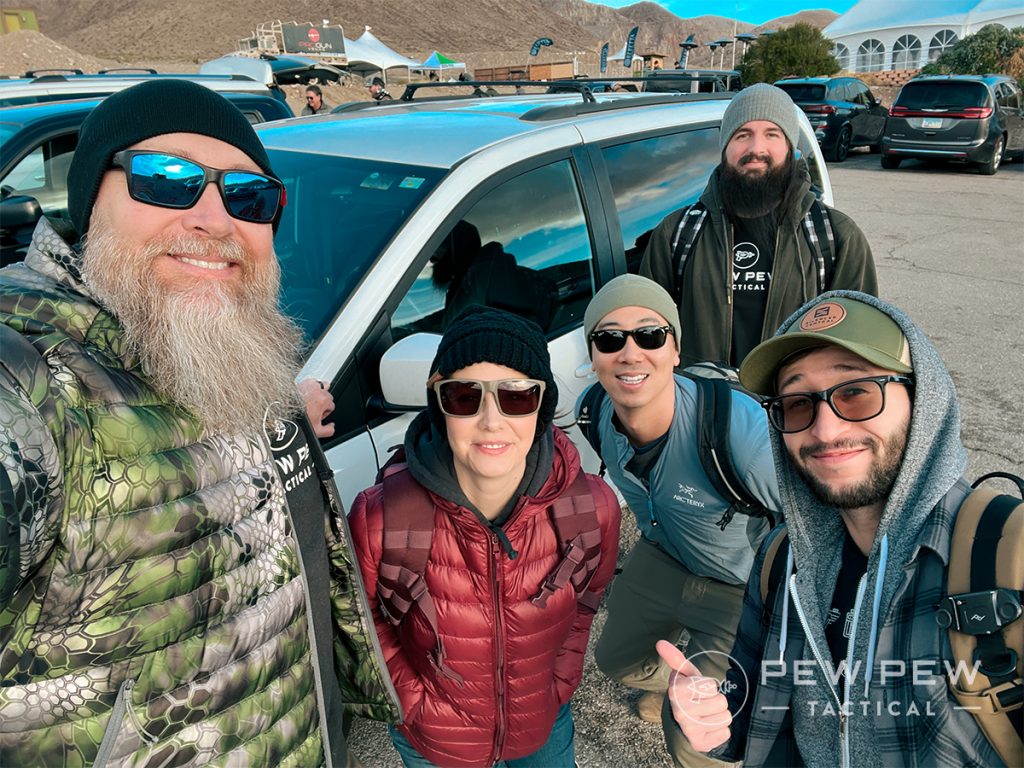
FAQs
What is the best pistol for bear defense?
Big-bore revolvers have traditionally been the go-to for bear country, but 10mm has been gaining in popularity lately because it's nearly as powerful, easier to control, and allows you to carry more rounds.
Is 10mm or .45 ACP better for bear defense?
Your proficiency probably matters more than the performance gap between these two cartridges. All else equal, I give 10mm the edge.
Does snake shot work?
Snake shot, also called rat shot, is an interesting concept but it's not very effective (especially with semi-automatic pistols). You're probably better off with regular .22 LR.
Final Thoughts
Hiking handguns are their own specific category which calls for a weird combination of power, an easy-to-carry design, and a certain level of versatility.
While the above list can get you started, remember, when choosing a hiking handgun, examine your potential threats.
Go with a firearm that can deal with those predators efficiently.
What’s your hiking handgun, and why’d you pick it? Let us know in the comments below! Before you hit the trail in your local national park, be sure to read the rules for carrying in national parks!
Latest Update
July 9, 2024: Removed Colt Delta Elite and Blackhawk Omnivore holster. Added supplemental media to CZ P10C.
June 18, 2024: Added more details to product selections, replaced the Glock 20 with the Glock 20 Gen5 MOS, and updated supporting content.

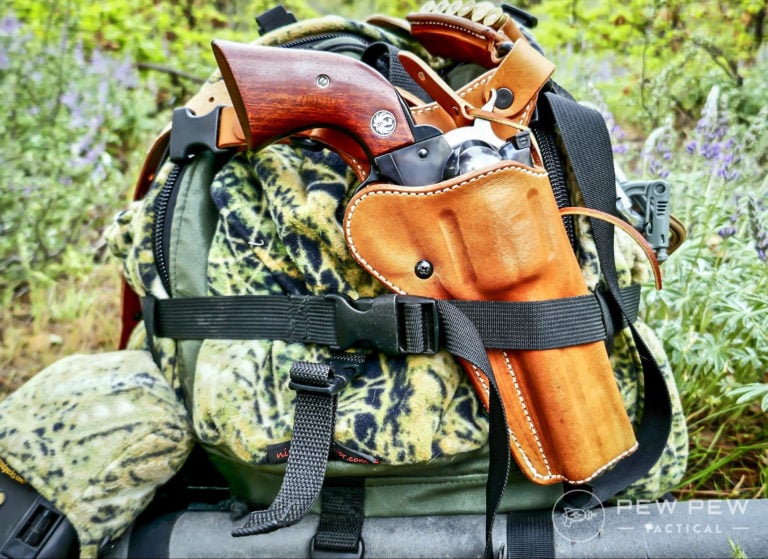
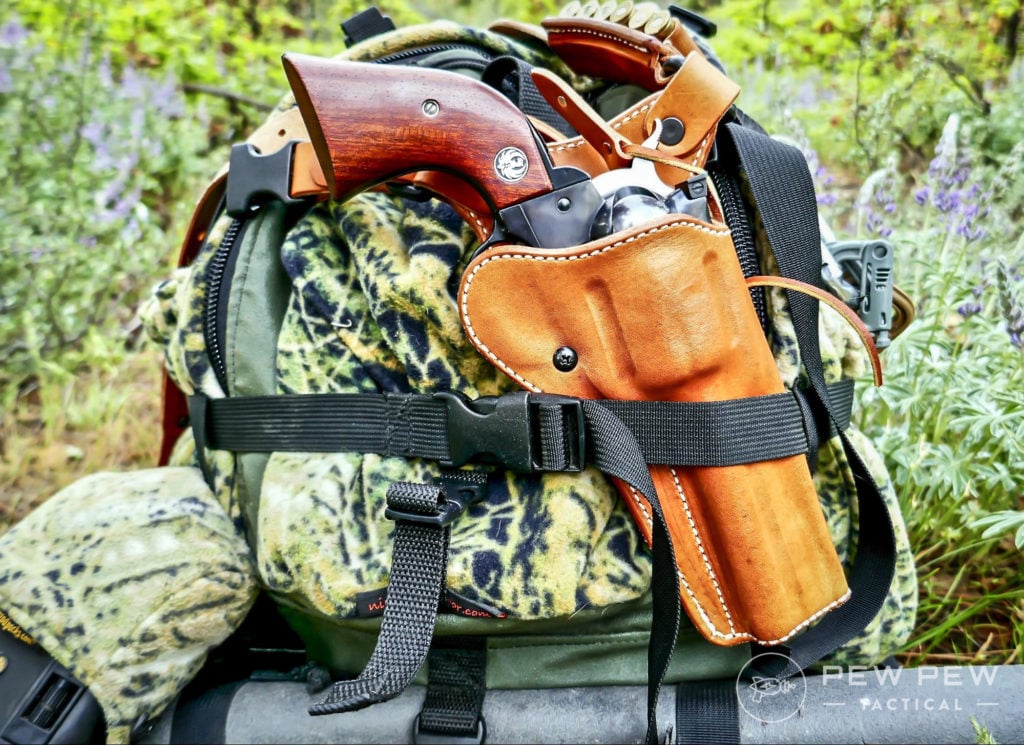

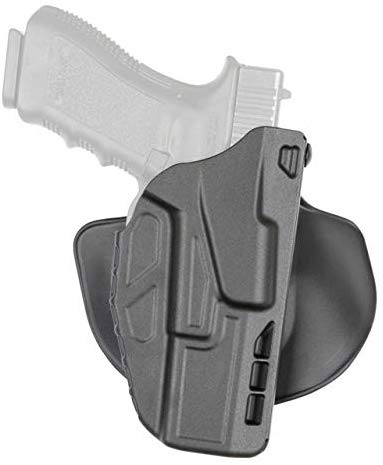

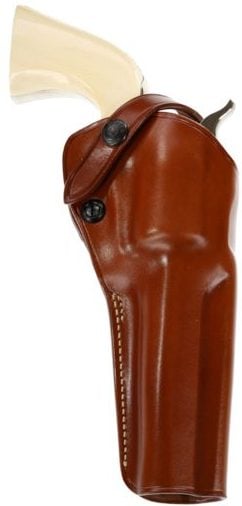

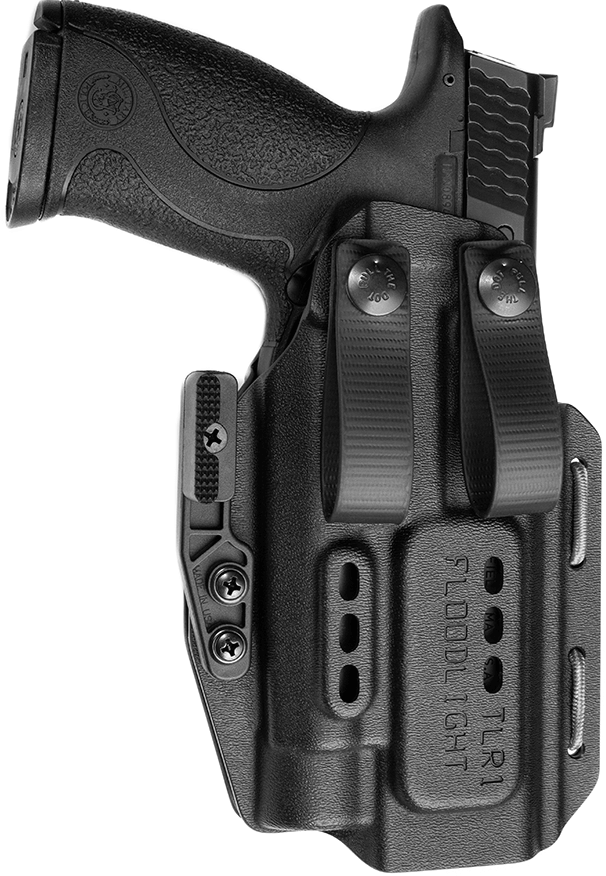

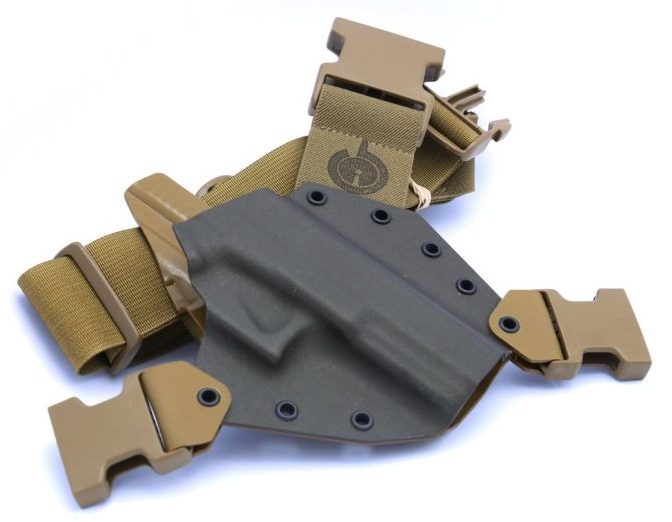

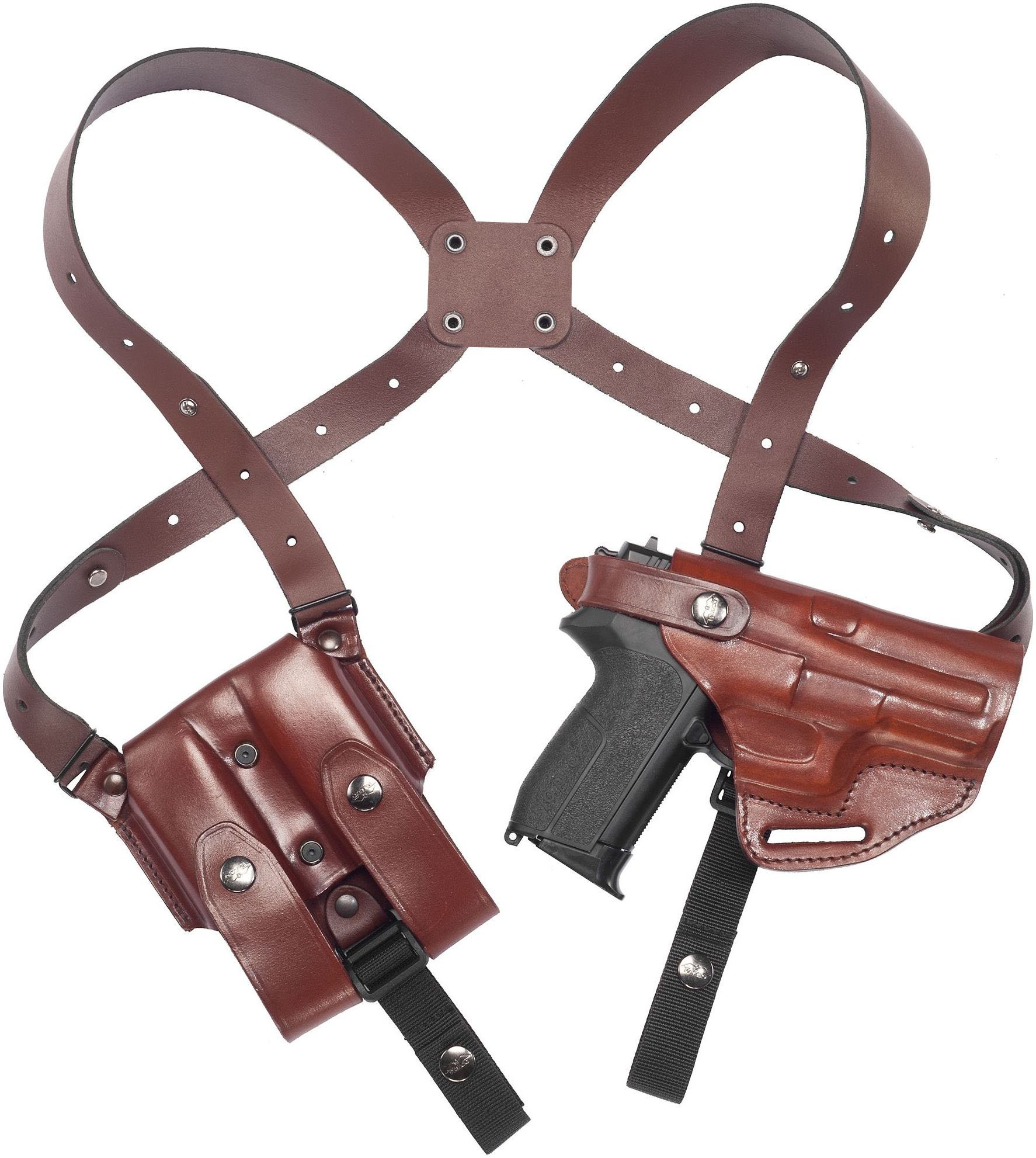









36 Leave a Reply
This is a huge subject with many variables.
Travis, have you ever put down a hog with a 9mm? I am sure it’s possible. But I doubt the probability of this.
I crippled a boar/hog with a .556 and then it took 2 shots from my SW 686+ .357 in the back of the head to put it down.
Hogs are also extra agile and have quick acceleration almost as fast as a deer. How are you going to hit something that moves with such quickness? With a pistol? Especially if it’s coming at you?
The .357 also allows me to load CCI snake shot in one or two of the cylinders which will dispatch a snake nicely.
I also use my Glock 30 with either Underwood or Buffalo Bore +P 230 grain .45 ACP hard cast flat nose. Haven’t had to use it so the jury is still out. An experienced hunter in the Texas Hill Country laughed when he asked if I thought I could hit a hog coming at me with a pistol?
I still carry either the Glock or a SW .642 with CCI snake shot and Underwood fluted solid copper .38 Special but carry a Mossberg 590 Shockwave/14” barrel in 20 gauge in a quiver. It’s 5 lbs and easy to carry.
Great article with helpful responses.
When hiking, hunting or camping what I carry depends on where I am. When living in Alaska, I carried a 44 mag- which is of doubtful power to stop a bear before he can come over and kill you. But, it made me feel good.
For a saddle gun I carried a Marlin in 45-70. I hand loaded hot.
I currently reside in Missouri where I carry a 22. The most common problem is snakes, and a 22 is more than enough for a copperhead.
Anything else is for 2 legged predators. If I was a young, small female of today I would carry any one of the guns listed. I make my daughter carry a 357 mag. SP101- all the time.
I just got a 629 and ordered a Bianchi Cyclone for it. Should be capable of taking hogs!
Paradise valley chest holster for my Glock 20
All leather and made in Montana . Use for Elk season . Love them
My hiking handgun of choice these days is a Taurus Tracker .44 Remington Magnum with a 5 shot capacity and a 4 inch barrel. Carried in a Gould & Goodrich thumb-break leather hip holster. I chose this because of the explosion of the black bear population here in Vermont. Add to that my advanced years (almost 70). When I was a much younger lad I always sported a Ruger New Model Singles Six in .22 Winchester Magnum Rimfire in a Bucheimer Flap hip holster and felt quite well protected while afield. I also carry a good knife. Always.
I use my EDC, a Kimber Compact Stainless in 45ACP (4" barrel) that I carry concealed in a SOB IWB made by Nate 2 (squared) when I'm hiking and also keep a NAA 22 WMR e/w holster grip in my front pocket, especially when the rattlesnakes are out. I have a G20 (10mm), but recently acquired an S&W M&P 2.0 in 10mm that I am wringing out loads with and will consider using it for my hiking/backpacking trips when I can find a decent holster. I used to carry a Ruger Redhawk w/4" barrel and still do when I am not concerned about concealing it. PS - I live in AZ
Can you give a quick caliber to critter guide? I want a gun to (open) carry hiking (north-central Arizona). We have all sizes of animals, from snakes to javelina to bobcats, coyotes, mountain lions, and bears. I'd like to minimize the variety of ammunition I buy and store, but it sounds from the article like 9mm would not be a good hiking choice (though even a .22LR is probably better than nothing). Would a few 9mm slugs just be an annoyance to a bear or lion?
A few well placed shots would dispatch a cat, but a bear?? Also I wouldn’t count on getting in multiple shots, you may only get one. Big cats are quiet and fast. I would suggest minimum of .357 mag. on up to an RPG. Stay safe out there!
Many thanks!
RPG... LOL. (but yeah)
Colorado guy here Gary. I would not hesitate to carry a 9mm for your critter selection. For black bear id just make sure you run a good bullet that can get in the skull. Like an underwood extreme penetrator. Way i always see it way less likely to be attacked by an animal than by another human in the woods.
I mean, the FNX 45 tac May not be light. But with 15+1 45acp there isn’t much to fear in my neck of the woods from 2 or 4 legged Vermin.
I'm concerned with my muzzle covering people hiking behind me with the shoulder holsters. So that leads to the chest rig. What is the best way to cover one on a warm hiking day in states that don't allow open carry?
In Colorado we have numerous threats running around in the woods, the most unpredictable being the two-legged kind. I carry a 45-70 bush gun in a scabbard on the side of my pack, easy to draw and weight is low as I have modified most of the wood hardware. G19 in an OWB holster as well. This year I am moving to a 4" S&W 500 in a Guides Choice Leather Chest holster. I am guessing moving from 2 guns to one may drop my weight by close to 5lbs. The Smith 500 can handle anything I will come across in CO.
Solid suggestions overall, but I respectfully disagree on recommending the Blackhawk Omnivore. It's bulky and juts outward from the waist like a police officer's duty holster, making it snag-prone. The Omnivore's "universal-fit" holster body is oversized for most pistols, meaning there are big gaps and cracks along the top of the holstered pistol for debris to fall in and get stuck. Finally, the thumb release mechanism feels flimsy. Instead, get a Safariland 6378 or 7378 holster and the 565BL hi-ride belt loop. Or a leather pancake holster with a thumb break.
Great analysis. My favorite woods gun, and the one I keep in the tank bag of my dual sport bike, is a Sig P220 SAO in 10mm. I also own a G20 and Delta Elite, but the Sig fits me better, has a very good trigger, and points naturally. 9 rounds of Underwood 200g flat nose provide excellent protection.
I prefer a long gun. With a 5.9 lb POF .308 with a padded Vickers sling, there’s nothing in the US that it can’t deal with. Also, when the 2 legged vermin see it they give a wide berth. Fine for hiking, not so much for running. That calls for a Taurus.38 with +P ammo. The LCR in .357 is also a good choice. Practice is required for any firearm.
Great Summary. I would love a 10 mm but for now I have a S&W .357 Combat Magnum in a chest rig and a companion Henry Side gate also in .357 for the back country. For less rural area, I feel safe with a S&W 443 in my pocket. Keep up the great work.....Love the 5x5 Drill target.
Where's the Judge? I'm much rather be able to pop a venomous snake with a .410 than a .22...
I'm with you its the Judge for me!
Excellent read! I run trails and recently started solo camping (in Florida). I have issues racking the slide. What is the best revolver option that would be light enough to carry while running but offer max protection? TIA!
Hey Lisa!
Maybe take a look at the Ruger LCR 5 shot revolver. This is truly a 21st century revolver with its polymer and metal alloy frame. I own one of these and use it for hiking, running, and personal defense. I use a Desantis nylon pocket holster and slip it into my dominant hand front pants or shorts pocket. You can barely tell that it is there, very light weight and not much of an outline from the gun. You can get it chambered in .38 special and it will handle the +P rounds (higher pressure). Also comes in .357 caliber which would be good against bigger animals, but I heard it would take some practice as “the kick” is very notable, as the LCR is a very light gun. I have no personal experience with the .357 version. I also have a speed loader made by 5-Star Firearms, part number J2-357/38. At the time of this writing, the loader is about $20. Hope this helps, Buck
Hi thanks so much! That is great info and I’ll be checking it out :)
With any small frame revolver - especially if you're going to load +P, check out getting some hogue grips for it. It will make it easier to control... I put +P ammo in my wife's S&W bodyguard and she pulled the trigger once, handed it back and said - "don't do that again!" The hogue grip made it easier to handle...
S&W 340 (no-internal-lock)
I recommend the Ruger SP101. 38 special or 357 mag, I have recommended it to at least 3 of my female friends. They all love the gun and we are all still friends, so there is that!
Hey Lisa! I really like the Ruger LCR and the SP101 for revolvers. If you want a semi-auto but struggle with the slide, though, the Smith & Wesson Shield EZ is a great option! My mom has arthritis and a nerve issue that impacts her right hand. As a result, she struggles to rack the slides of most semi-autos; but she's able to do the Shield EZ model. Just figured I'd mention that as well.
Backwoods I have the Glock40 10mm (same basic platform as the Glock20 but a longer barrel)
With flat tip Buffalo Bore ammo it will stop anything. Anything.
More local I hike with my Glock 48 9mm, single stack. Super light and easy and will take care of anything short of a bear, Moose or Elk.
Hiking out at Fort Robinson, Nebraska I packed an Uberti 357. Cougar are native to the area. We were secure.
I'll second the nomination for the Glock G20. There was NO semi automatic on the market that was able to get me to quit packing big bore revolvers. Then one day I decided I needed a semi auto in case I need to hunt aggressive mutated radioactive ducks in the wasteland of the future... and so I got the G20... and within thirty minutes it became my favorite handgun of all time. I no longer pack anything else except that Glock 20. I did swap out the sights, initially to Ameriglo Hackathorns, but now it wears Heine Slant Pro Straight Eight Night Sights. This Glock is the gun that will have to be pried out of my dead fingers!
PS, in case you're wondering, I carry it in a Gunfighters Inc Ronin holster.
I have a Ronin (and the thigh rig) for my G19. Absolutely love it. How’s the G20 carry OWB? I was thinking I would probably always wind up with it on my thigh because of the size of the weapon, but I’m curious how comfortable it is OWB during a hike. I pretty much always carry concealed if possible and that’s definitely easier to do OWB.
Not happy with the Glock 20 holster. I don't like a release on my holsters. Especially when in the woods.
I haven't found OWB that I like for the g20. My next step is custom.
Glock 29...just sayin'
Hi a good write up as usual , that said I'll simply suggest that folks think twice about a shoulder rig while doing any hiking with a pack. I hunt and spend a fair bit of time hiking with a pack on, scouting and when I find a good spot, carrying tools in to do trail maintance or tree prep. I found that shoulder rigs either interfere with the pack's shoulder straps, or constantly flag you hiking buddy walking behind you. Similar problem with any IWB or OWB carry option, they interefere with the way the waistbelt on most good packs sit, again at least for me. So I run Gunslinger's Kenai chest rig with a Ruger SR1911 Commander size 1911 or in the winter, a drop leg rig, mostly because the chest rig can get buried in layers of winter clothing. Thanks again for the great reviews.
Most of my hiking, fishing and hunting is in Florida. I often see snakes but usually not threatened by them. My biggest concern is rabid animals (like racoons, foxes). I, usually, carry 2 handguns, a small frame .22 LR HP or .22 WMR HP in a pocket or belt holster and my EDC in a 'tanker style holster'.
Holsters need to be able to work in conjunction with backpacks, changing layers of clothes that often come with a hike, and the actual movement of hiking. In my years of hiking in Alaska and PacNW, I don't know anyone that uses shoulder holsters because of these reasons. Hill People make awesome chest packs that conceal well and are practical, those and similar disserve some attention. A bit surprised no references to lighter single stack 40 or 45's made your list like a Kahr or XDS 4" but a heavy 1911 does.
The best hiking weapon is a fire team, backed up by a quick reaction force on standby.
It turns out violent people wanting to harm others go hiking (read that as looking for prey meaning you too.)
A person would be a fool to go on a wilderness trek we like to call hiking without being armed